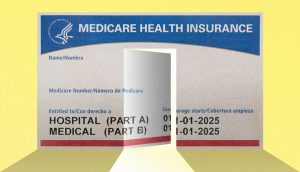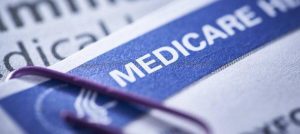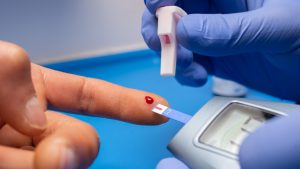Thanksgiving is a time for celebration, gratitude, and delicious food, but for those managing diabetes, it can also feel like a challenge. With all the tempting dishes on the table, it’s natural to wonder how to stay on track while still enjoying the festivities. The good news? You don’t have to miss out! With a little planning and mindfulness, you can enjoy a Thanksgiving feast that’s both satisfying and diabetes-friendly.
Plan Ahead for Success 🗓️
Preparation is the key to enjoying the holiday without compromising your health. Here’s how to get started:
- Know the Menu: If you’re dining with family or friends, ask about the menu in advance. This allows you to identify dishes that fit your plan or even bring your own diabetes-friendly options.
- Eat Before the Feast: Avoid arriving overly hungry by eating a small, balanced snack before the meal, such as a handful of nuts or a low-carb yogurt.
Balance Your Plate Like a Pro 🍽️
Creating a balanced plate can help keep your blood sugar stable:
- Focus on Veggies: Fill half your plate with non-starchy vegetables like green beans, Brussels sprouts, or a colorful salad.
- Portion Control for Carbs: Limit starchy sides like mashed potatoes, stuffing, and bread to one-quarter of your plate.
- Protein Power: Choose lean protein options like turkey without the skin to fill the remaining quarter.
- Skip or Share Desserts: If dessert is a must, opt for a small portion or share it with a loved one. Consider alternatives like sugar-free pumpkin pie or fruit.
Practice Mindful Eating 🧘
With so many flavors and dishes, it’s easy to overeat. Mindful eating can help you enjoy your meal without going overboard:
- Slow Down: Chew slowly and savor each bite. This helps you recognize when you’re full.
- Pause Between Servings: Give yourself time to enjoy the conversation and assess your hunger before going for seconds.
- Stay Hydrated: Drink water throughout the meal to stay hydrated and curb unnecessary snacking.
Keep Active and Stay Positive 🚶
Physical activity can help manage blood sugar levels during the holiday:
- Go for a Walk: Suggest a post-meal stroll with family or friends. It’s a great way to bond and aid digestion.
- Involve the Family: Turn activity into fun traditions, like playing a family game of football or engaging in holiday crafts.
- Relax and Enjoy: Remember that Thanksgiving is about gratitude, not perfection. Focus on the moments that bring joy, like spending time with loved ones or reflecting on what you’re thankful for.
Monitor Your Blood Sugar 📉
Holiday meals can be unpredictable, so keep track of your blood sugar levels:
- Test Regularly: Check your blood sugar before and after meals to see how different foods affect you.
- Plan for Adjustments: If you use insulin or other medications, talk to your healthcare provider about potential adjustments for holiday meals.
You Deserve to Celebrate 🎉
Living with diabetes doesn’t mean missing out on the things you love—it means making choices that empower you to live fully. By planning ahead, balancing your plate, and practicing mindfulness, you can enjoy a delicious and meaningful Thanksgiving without the stress.
This holiday, give thanks not only for the feast but also for your ability to make choices that prioritize your health and happiness. Happy Thanksgiving!

Type 2 Diabetes: Is It Really Reversible?
A recent National Geographic article [link] explores how type 2 diabetes could be reversible with the right approaches. This condition, which affects millions of people worldwide, has long been considered a chronic and progressive disease. However, recent research challenges this perception and suggests that with lifestyle changes and the right approach, remission is possible. The

How Do GLP-1 Drugs Compare? A Breakdown of Ozempic, Mounjaro, and Trulicity
GLP-1 receptor agonists have revolutionized diabetes management, with drugs like Ozempic, Mounjaro, and Trulicity leading the market. But how do these medications compare in terms of effectiveness, side effects, and patient outcomes? Let’s explore their differences and what they mean for diabetes patients. Understanding GLP-1 Medications GLP-1 receptor agonists mimic a natural hormone that helps

Why Has Medicare Spending on Diabetes Medications Skyrocketed in 5 Years?
In the past five years, Medicare spending on diabetes medications has increased nearly fivefold, reaching $35.8 billion in 2023. This surge has been primarily driven by the growing use of GLP-1 drugs such as Ozempic, Mounjaro, and Trulicity. But what is behind this cost escalation, and how does it affect patients and the U.S. healthcare

The Gut Microbiota and Blood Sugar Control: A Hidden Connection
The human gut is home to trillions of bacteria that play a crucial role in digestion, immune function, and even metabolism. Recent research has revealed a fascinating link between the gut microbiota and blood sugar regulation, shedding light on how the balance of microbes in our intestines can influence diabetes risk and overall metabolic health.

The Dawn Phenomenon: Why Blood Sugar Rises While You Sleep
For many people with diabetes, waking up with high blood sugar levels can be frustrating—especially if they didn’t eat anything overnight. This early-morning spike in blood glucose is known as the Dawn Phenomenon, and it happens due to natural hormonal changes in the body. But why does it occur, and how can it be managed?

The Influence of Red Light on Blood: Can It Improve Diabetes?
Type 2 diabetes is a metabolic disease characterized by insulin resistance and elevated blood glucose levels. In the search for complementary alternatives to improve glycemic control, red light therapy has gained attention due to its potential to enhance circulation, reduce inflammation, and optimize cellular function. But what does science say about it? ✨ What is

